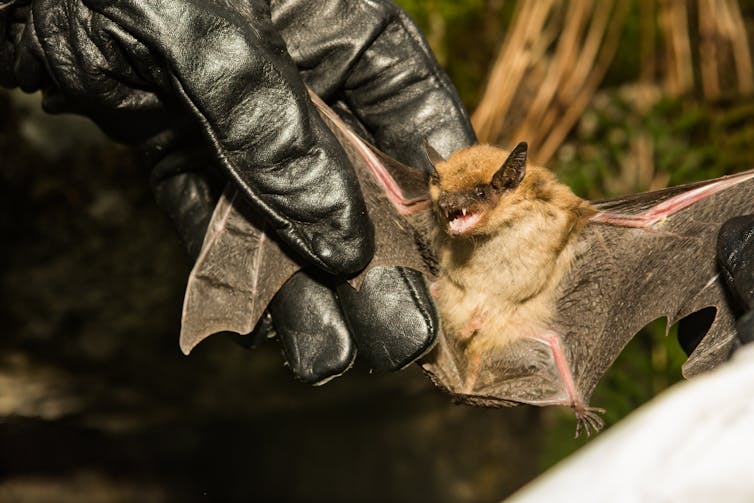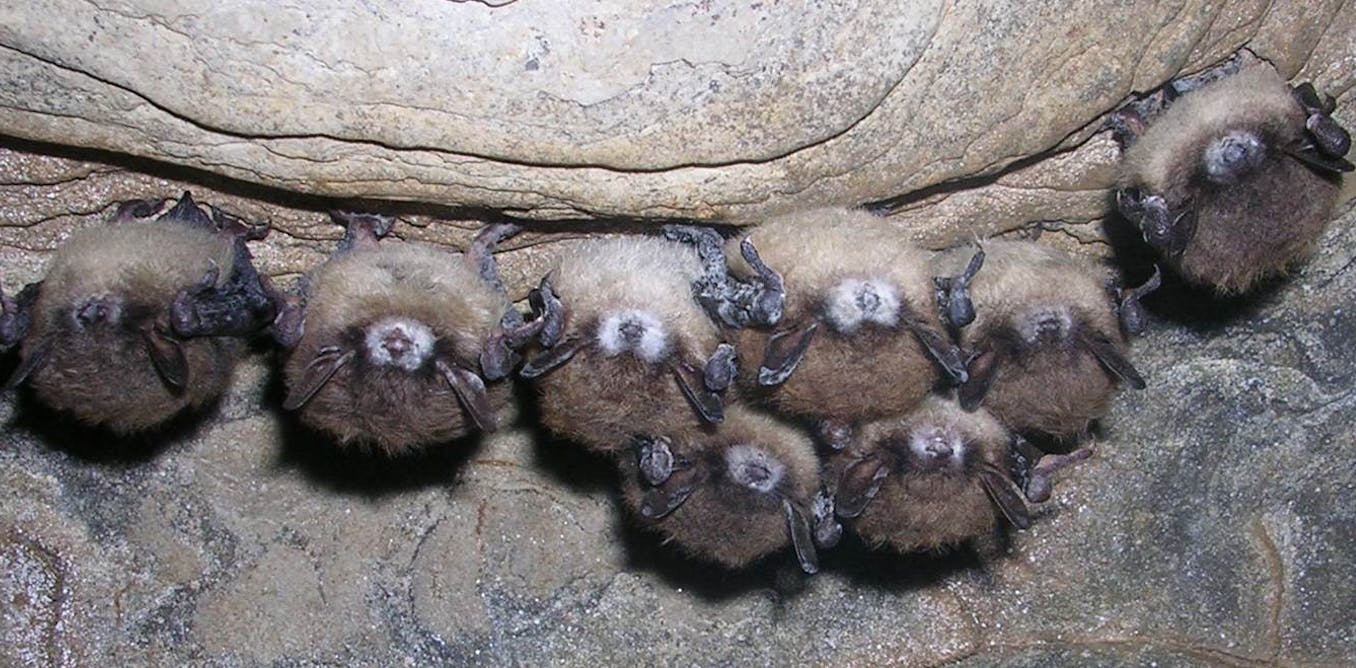[ad_1]
A dangerous fungus has been sweeping all through North America with devastating penalties. Beforehand decade, between 5m and 7m bats inside the US and Canada have been worn out due to the fungal sickness usually referred to as white nostril syndrome, which alters their behaviour in doubtlessly deadly strategies. Nevertheless the latest evaluation reveals there’s prone to be hope for researchers attempting to battle the sickness, following the invention that UV gentle appears to destroy the fungus’s DNA.
White nostril syndrome is attributable to the fungus Pseudogymnoascus destructans, which grows on the bats’ muzzles (subsequently the title) and totally different hairless physique elements along with wings, and causes pores and pores and skin lesions. P. destructans is psychrophilic, meaning it thrives in chilly temperatures between 4°C and 20°C. This means it impacts bats all through hibernation.
The itchy, painful lesions set off contaminated bats to repeatedly wake from hibernation, leaving them confused and inflicting them to indicate extraordinarily unusual habits, resembling flying exterior all through daylight in nearly freezing temperatures. The chilly, lack of meals and irregular train ends in bats depleting their winter fat reserves, and ravenous, dehydrating or freezing to dying. Due to this, the sickness can kill between 90% and 100% of bats in affected hibernating colonies.
Out of the 47 bat species native to the US and Canada, over half rely upon hibernation for survival. 9 of these species (along with two endangered and one threatened) already current indicators of white nostril syndrome. P. destructans has moreover been current in a single different six species (along with one endangered) that don’t however current indicators. The little brown bat (Myotis lucifugus), as quickly as the commonest bat in North America, is now predicted to face regional extinction.
Bats often keep a really very long time and produce solely a single pup yearly, so affected species are unlikely to get properly quickly. Not solely is that this harmful for biodiversity, nonetheless it might also have a extreme monetary have an effect on on individuals. In temperate areas, bats eat as a lot as 600 bugs a night and so current an necessary pest-control service for North American farmers, efficiently value US$3.7 billion a 12 months.
How did this bat-astrophe come about?
P. destructans has almost certainly co-existed with bats in Eurasia for 1000’s and 1000’s of years. Due to this, these bats have developed defences in direction of the fungus. So on this part of the world, whatever the occasional delicate outbreak of white nostril syndrome, the sickness doesn’t significantly have an effect on full groups of bats. Nevertheless when P. destructans was launched to the beforehand unexposed American bats, the outcomes had been disastrous.
White nostril syndrome was present in North America in 2006. Everyone knows that the fungus was likely unfold by human train because of the North American fungus is almost genetically an an identical to plenty of the samples current in Europe. Moreover, bats don’t migrate between the two continents and plenty of the distances between contaminated caves inside the US are longer than the flying range of affected bats. On prime of that, the first opinions of white nostril syndrome acquired right here from a well-liked vacationer cave near Albany, New York. So the fungus almost certainly unfold by means of contaminated garments and caving instruments from vacationers visiting affected areas.

Shutterstock
Since then, white nostril syndrome has grow to be one of many essential excessive wildlife diseases ever recorded. However there may really be a light-weight on the end of the tunnel. A evaluation crew from the US Forest Service has discovered that P. destructans is awfully delicate to ultra-violet gentle, notably to UV-C gentle that kills germs nonetheless doesn’t set off pores and pores and skin most cancers. They found that common doses of UV-C gentle killed over 99% of the fungus, and that even low doses killed 85%.
The affect is so potent because of UV gentle destroys the fungus’s DNA, and, in distinction to related fungi, P. destructans can’t restore the damage. Extra exams are on one of the best ways to confirm whether or not or not UV gentle causes any damage to the bats themselves. Nevertheless the reality that UV-C gentle has already been utilized in treatments of totally different fungal infections in mammals means the invention could also be very promising.
Managing wildlife diseases might be powerful and dear. Think about how exhausting will probably be to make use of fungicide pores and pores and skin cream to tens of a whole lot of bats hanging from the very best of a cave. Nevertheless shining a straightforward hand-held UV-C gentle provide on them might be loads easier. So this evaluation could have huge implications for safeguarding North American bats.
[ad_2]
